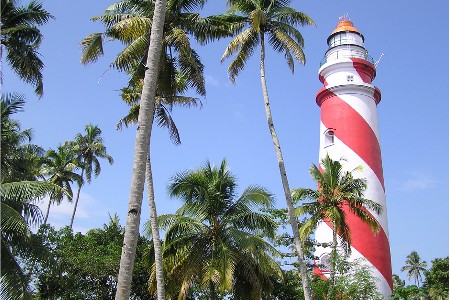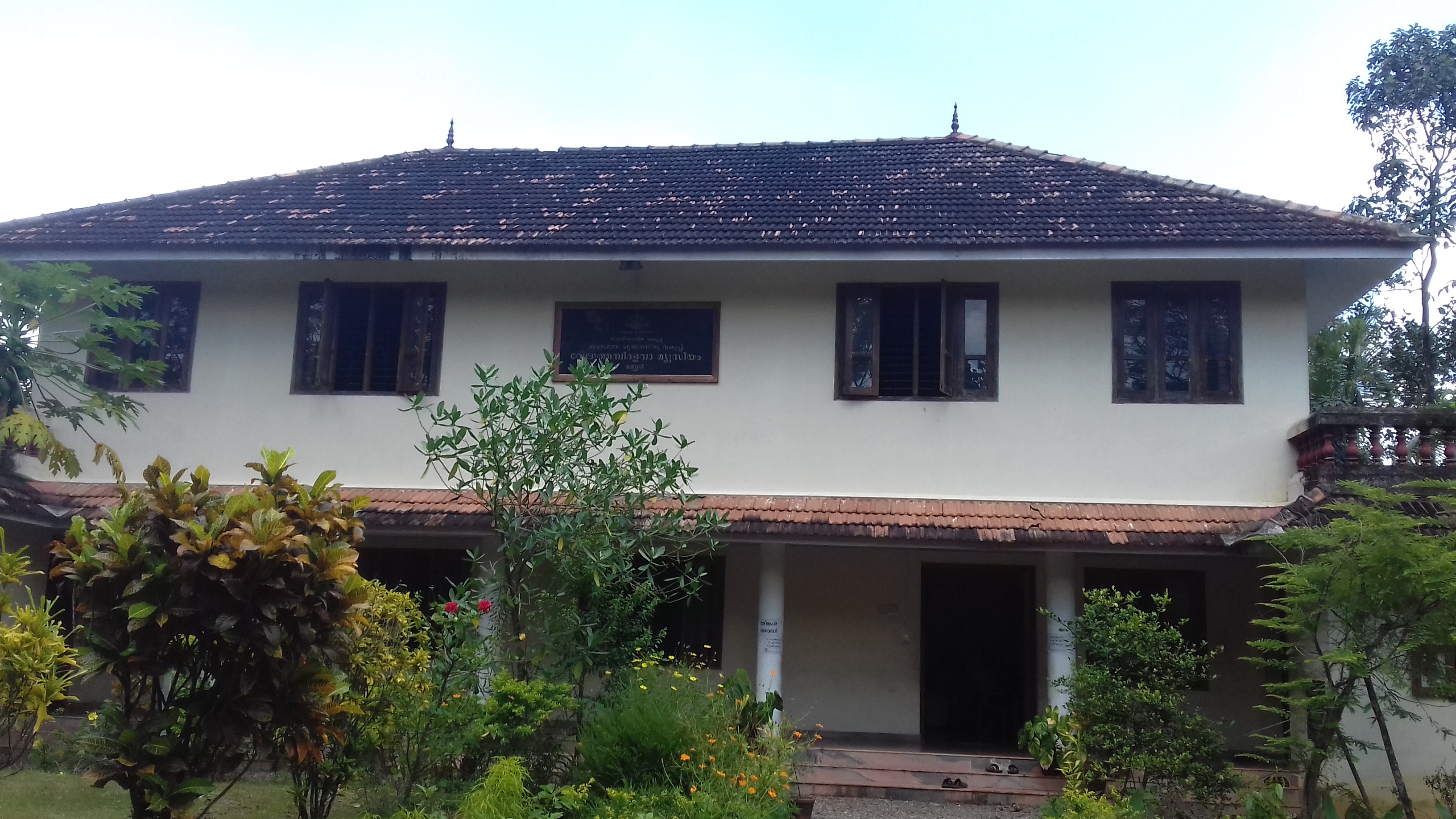|
Ashtamudi Lake
Ashtamudi Lake (''Ashtamudi Kayal''), in the Kollam District of the Indian state of Kerala, is the most visited backwater and lake in the state. It possesses a unique wetland ecosystem and a large palm-shaped (also described as octopus-shaped) water body, second only in size to the Vembanad estuary ecosystem of the state. ''Ashtamudi'' means 'eight braids' (''Ashta'' : 'eight'; ''mudi'' : 'hair braids') in the local Malayalam language. The name is indicative of the lake's topography with its multiple branches. The lake is also called the gateway to the backwaters of Kerala and is well known for its houseboat and backwater resorts. Back water Retreat Ashtamudi Ashtamudi Lake Ashtamudi Wetland was included in the list of wetlands of international importance, as defined by the Ramsar Convention for the conservation and sustainable utilization of wetlands. Along both banks of the lake and its backwater canals, coconut groves and palm trees interspersed with towns and vill ... [...More Info...] [...Related Items...] OR: [Wikipedia] [Google] [Baidu] |
Kollam District
Kollam district (), (formerly Quilon district) is one of 14 districts of the state of Kerala, India. The district has a cross-section of Kerala's natural attributes; it is endowed with a long coastline, a major Laccadive Sea seaport and an inland lake (Ashtamudi Lake). The district has many water bodies. Kallada River is one among them, and the east side land of river is East Kallada and the west side land is West Kallada. Overview Kallada Boat race is one of the famous festival events of the district. Even though it is a competition between two land sides of the river, many boat clubs from various places, even beyond the district participate in the event. Kollam is the capital of Kerala's cashew industry. Plains, mountains, lakes, lagoons, and backwaters, forests, farmland and rivers make up the topography of the district. The area had trading relationships with Phoenicia and Ancient Rome. Climate Kollam's temperature is almost steady throughout the year. The average te ... [...More Info...] [...Related Items...] OR: [Wikipedia] [Google] [Baidu] |
Marine Stewardship Council
The Marine Stewardship Council (MSC) is a non-profit organization which aims to set standards for sustainable fishing. Fisheries that wish to demonstrate they are well-managed and sustainable compared to the MSC's standards are assessed by a team of Conformity Assessment Bodies (CABs). The mission of the MSC is to use its ecolabel, for which the MSC receives royalties for licensing it to products, and fishery certification program to recognise and reward sustainable fishing practices. The MSC has faced criticism in the past, mainly centering on its close ties to the fishing industry and conflict of interest stemming from royalties received by the industry for its certification label. Contribution to changes in the oceans When buyers choose MSC-certified fish, well-managed fisheries are rewarded for sustainable practices. In turn, the growing market for certified sustainable seafood generates a powerful incentive for other fisheries to demonstrate they are fishing sustainabl ... [...More Info...] [...Related Items...] OR: [Wikipedia] [Google] [Baidu] |
Kallada Bridge
Kallada is a village in Kollam district of the Indian state of Kerala. Maharaja Marthanda Varma of the kingdom of Travancore was born there. The Kallada River passes through there and the famous Chittumala Sree Durga Devi temple is situated there, Kallada Valiya pally(St. Mary's orthodox church / mar andhrayos pilgrim centre) is also situated there. See also * Kizhakkekallada Kizhakkekallada, also known as East Kallada, is a large village in the Kollam district in the state of Kerala, India. It is located about northeast of Kollam. History Kallada is believed to be the old port Nelcynda which was mentioned in t ... References {{coord missing, Kerala Villages in Kollam district ... [...More Info...] [...Related Items...] OR: [Wikipedia] [Google] [Baidu] |
Paravur, Kollam
Paravur, , (''Paravoor''), is a town and a municipality in the Kollam Metropolitan Area of Kollam district in the Indian state of Kerala. Paravur railway station is the last station in Kollam district which is on the route to Trivandrum while travelling towards South India. Governance and Wards Paravur Municipality consists of Kottapuram, Koonayil, Thekkumbhagam, Chillakkal, Perumpuzha, Nedungolam, Pozhikara, Maniyamkulam, Kurumandal, Kottamoola, Attinpuram & Kochalummoodu. Paravur Municipality is a Grade-II Municipality of Kerala. Geography Paravur is located at 8.78 N 76 E. It has an average elevation of 10 metres (32 feet). Paravur, 21 kilometers from the Kollam, is a narrow skirt of land stretching in between the backwaters and the sea. There is an elevation of 6 metres above sea level, extending to 16 metres on the inland. Ithikkara river is flowing through paravur. Nedungolam in paravur is now famous for mangrove forest. Demographics India census, Para ... [...More Info...] [...Related Items...] OR: [Wikipedia] [Google] [Baidu] |
Alleppey
Alappuzha or Alleppey () is the administrative headquarters of Alappuzha district in state of Kerala, India. The Backwaters of Alappuzha are one of the most popular tourist attractions in India which attracts millions of domestic and international tourists. Alleppey is a city and a municipality in Kerala with an urban population of 174,164 and ranks third among the districts in literacy rate in the state. In 2016, the Centre for Science and Environment rated Alappuzha as the cleanest town in India. Alappuzha is considered to be the oldest planned city in this region and the lighthouse built on the coast of the city is the first of its kind along the Laccadive Sea coast. The city is 55 km from Kochi and 155 km north of Thiruvananthapuram. A town with canals, backwaters, beaches, and lagoons, Alappuzha was described by George Curzon, Viceroy of India at the start of the 20th century, as the "Venice of the East." Hence, it is known as the "Venetian Capital" of Kerala ... [...More Info...] [...Related Items...] OR: [Wikipedia] [Google] [Baidu] |
Thiruvananthapuram
Thiruvananthapuram (; ), also known by its former name Trivandrum (), is the capital of the Indian state of Kerala. It is the most populous city in Kerala with a population of 957,730 as of 2011. The encompassing urban agglomeration population is around 1.68 million. Located on the west coast of India near the extreme south of the mainland, Thiruvananthapuram is a major information technology hub in Kerala and contributes 55% of the state's software exports as of 2016. Referred to by Mahatma Gandhi as the "Evergreen city of India", the city is characterised by its undulating terrain of low coastal hills. The present regions that constitute Thiruvananthapuram were ruled by the Ays who were feudatories of the Chera dynasty. In the 12th century, it was conquered by the Kingdom of Venad. In the 18th century, the king Marthanda Varma expanded the territory, founded the princely state of Travancore, and made Thiruvananthapuram its capital. Travancore became the most dominan ... [...More Info...] [...Related Items...] OR: [Wikipedia] [Google] [Baidu] |
National Highway 47 (India)
National Highway 47 (NH 47) is a primary National Highway in India. It starts from Bamanbore in Gujarat and terminates at Nagpur in Maharashtra. This national highway is about long. Before renumbering of national highways in 2010, NH-47 was variously numbered as old national highways 8A, 59, 59A & 69. Route NH47 transits through three states of India namely Gujarat, Madhya Pradesh and Maharashtra. ;Gujarat Bamanbore, Limbdi, Ahmedabad, Godhra, Dahod - M.P. border ;Madhya Pradesh Gujarat border - Indore, Betul - Maharashtra border ;Maharashtra M.P. border - Saoner, Nagpur Junctions : Terminal near Bamanbore. : near Limbdi : near Sarkhej : near Ahmedabad : near Ahmedabad : near Limkheda : near Dahod : near Jhabua : near Dhar : near Indore : near indore : near Kheri : near Betul : near Betul : near Multai : near Multai : near Saoner : near Saoner : near Saoner : near Dahegaon : near Nagpur : Terminal near Nagpur. See also * List of National Hi ... [...More Info...] [...Related Items...] OR: [Wikipedia] [Google] [Baidu] |
Thiruvananthapuram International Airport
Thiruvananthapuram International Airport , is an international airport which serves Thiruvananthapuram, the capital city of Kerala, India. Established in 1932, it is the first airport in the state of Kerala and fifth international airport of India, officially declared in 1991. It is the operating base of Air India, Air India Express, IndiGo and SpiceJet. Spread over an area of , the airport is approximately due west from the city centre and the Padmanabhaswamy Temple, from Kovalam beach, from Technopark and from the under construction Vizhinjam International Seaport. It shares a visible proximity to Shankumugham Beach making it the nearest airport to a sea in India, just about 0.6 miles (approx. 1 km) away from the sea. The airport is the eighth busiest airport in India in terms of international traffic and the twenty second–busiest overall. In fiscal year 2018–19, the airport handled more than 4.4 million passengers with a total of 33,093 aircraft movements. In ... [...More Info...] [...Related Items...] OR: [Wikipedia] [Google] [Baidu] |
Quilon
Kollam (), also known by its former name Quilon , is an ancient seaport and city on the Malabar Coast of India bordering the Laccadive Sea, which is a part of the Arabian Sea. It is north of the state capital Thiruvananthapuram. The city is on the banks of Ashtamudi Lake and the Kallada river. It is the headquarters of the Kollam district. Kollam is the fourth largest city in Kerala and is known for cashew processing and coir manufacturing. It is the southern gateway to the Backwaters of Kerala and is a prominent tourist destination. Kollam has a strong commercial reputation since ancient times. The Arabs, Phoenicians, Chinese, Ethiopians, Syrians, Jews, Chaldeans and Romans have all engaged in trade at the port of Kollam for millennia. As a result of Chinese trade, Kollam was mentioned by Ibn Battuta in the 14th century as one of the five Indian ports he had seen during the course of his twenty-four-year travels. [...More Info...] [...Related Items...] OR: [Wikipedia] [Google] [Baidu] |
Velu Thampi
Velayudhan Chempakaraman Thampi of Thalakulam (1765–1809) was the Dalawa or Prime Minister of the Indian kingdom of Travancore between 1802 and 1809 during the reign of Bala Rama Varma Kulasekhara Perumal. He is best known for being one of the earliest individuals to rebel against the British East India Company's authority in India. Early life Velayudhan Thampi was born in a Nair family to Manakkara Kunju Mayatti Pillai and his wife Valliyamma Pillai Thankachi of Thalakkulam. He was born on 6 May 1765 in the village of Thalakkulam in Travancore which is in the present day district of Kanyakumari in Tamilnadu then a southern district of Travancore State. His full title was "Idaprabu Kulottunga Kathirkulathu Mulappada Arasarana Irayanda Thalakulathu Valiya Veettil Thampi Chempakaraman Velayudhan" being from the family that held the ownership of the province and the high title of ''Chempakaraman'' for their services to the modern state created by Maharajah Marthanda Varma. ... [...More Info...] [...Related Items...] OR: [Wikipedia] [Google] [Baidu] |
Ibn Batuta
Abu Abdullah Muhammad ibn Battutah (, ; 24 February 13041368/1369),; fully: ; Arabic: commonly known as Ibn Battuta, was a Berber Maghrebi scholar and explorer who travelled extensively in the lands of Afro-Eurasia, largely in the Muslim world. He travelled more than any other explorer in pre-modern history, totalling around , surpassing Zheng He with about and Marco Polo with . Over a period of thirty years, Ibn Battuta visited most of southern Eurasia, including Central Asia, Southeast Asia, South Asia, China, and the Iberian Peninsula. Near the end of his life, he dictated an account of his journeys, titled '' A Gift to Those Who Contemplate the Wonders of Cities and the Marvels of Travelling'', but commonly known as ''The Rihla''. Name Ibn Battuta is a patronymic literally meaning "son of the duckling". His most common full name is given as Abu Abdullah Muhammad ibn Battuta. In his travelogue, ''the Rihla'', he gives his full name as Shams al-Din Abu’Abdallah Muhamma ... [...More Info...] [...Related Items...] OR: [Wikipedia] [Google] [Baidu] |



.jpg)


